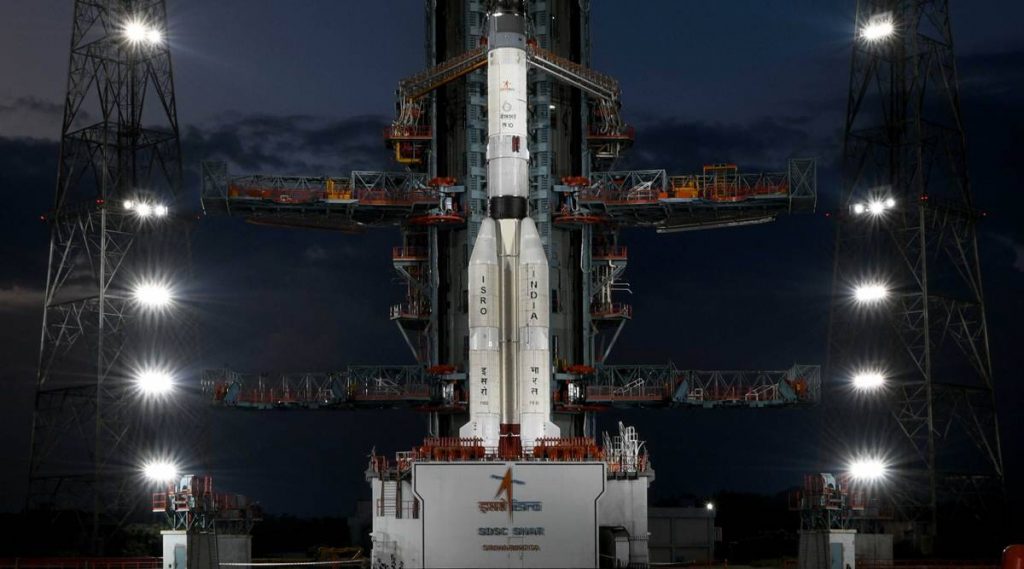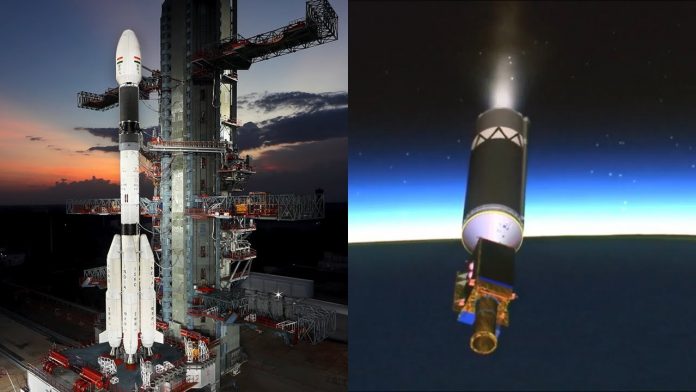Today, at 5:43 a.m, ISRO was fully ready to launch the satellite EOS-03 which is an Earth observation satellite, but unfortunately, due to some technical anomaly, the mission was not successful. This launch was originally planned for March 5, 2020, that is, last year, but due to the first wave of the covid-19 pandemic and due to some technical reasons, this mission was then postponed. And after waiting for such a long time, the mission failed as the GSLV rocket carrying it malfunctioned about 5 minutes from the take-off.
The mission was to place the EOS-03, Earth Observation Satellite on the Geosynchronous Transfer orbit in 19 minutes after lift-off. Unfortunately, the mission failed as the GSLV rocket malfunctioned 5 minutes after lift-off. Regarding this, ISRO tweeted, “ GSLV f10 launch took place today at 0543 hours IST as scheduled. Performance of the first and second stages was normal. However, Cryogenic Upper Stage Ignition did not happen due to technical anomaly. The mission couldn’t be accomplished as intended.”
As the satellite was launched from Satish Dhawan space center, Sriharikota after a 26-hour countdown, shortly it was announced in the Mission Control Centre by Range Operation Director that the mission failed due to a performance anomaly. On this, former ISRO chairman G Madhavan Nair got really disappointed by the mission’s failure and suggested that the satellite “would have fallen in the sea and is lost forever”. He further said that out of 8 launches, this was the second time that there had been a glitch in the cryogenic stage, which is very complex compared to other steps. According to him, they know that there is something wrong in the cryogenic stage, but they are not sure yet and have to study more in detail to know exactly what happened.
The cryogenic engine present in the cryogenic upper stage is fuelled with liquid hydrogen and liquid oxygen at very low temperatures. Cryogenic engines are very complex because of extremely low temperatures, that is, hundreds of degrees Celsius below zero. And this has to be maintained a lot. Although ISRO has faced these difficulties earlier and also completed some missions, this time the cryogenic stage was more complex.

A short description of the EOS-03 satellite :
The Geo Imaging Satellite-1 or GISAT-1, which was the former name of the EOS-03 satellite was a geo imaging or earth observation satellite. The weight of the satellite was approximately 2,268 kg. The satellite was planned to be inserted into an elliptical geosynchronous transfer orbit. The satellite was capable of reaching the final circular geostationary orbit with the help of its own propulsion system. This satellite had the capability to send images in near-infrared, multispectral visible, shortwave infrared, hyperspectral visible spectral bands. The satellite was designed in such a way that it would have worked for at least 10 years.
This earth observation satellite was made to provide real-time images of other countries or borders and to quickly monitor natural disasters. In fact, the objective of the mission was that the satellite could provide real-time images of large areas at frequent intervals so that it would be kind of easy to quickly monitor the natural disasters or spectral signatures for agriculture, water bodies. ISRO thought it would also help with disaster warning, cyclone monitoring, or even thunderstorm monitoring. In addition to this, the satellite was also capable of providing spectral signatures for agriculture, mineralogy, cloud properties, glaciers, oceanography, which would have helped the researchers back home to understand new insights on an issue.
According to ISRO, EOS-03 was the first state-of-the-art Earth observation satellite of India in a geostationary orbit. The satellite was the 14th flight of the GSLV launcher, and a 4th failure.
But there are other missions too, which also involve GSLV rockets that are planned for this year and also next year, but their current missions are probably impacted because of this failure.


